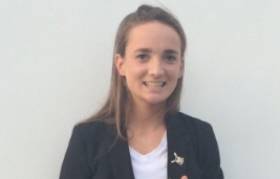Displaying items by tag: O'Connor
O'Connor So Close at Provinces Indoor Rowing
#Rowing: Eoghan O’Connor of Castleconnell came agonisingly close to a remarkable feat at the Irish Provinces Indoor Rowing Championships at the University of Limerick today. The Castleconnell man missed setting a time of six minutes for the 2,000 metres by just one tenth of a second. Cathal Cummins of Lee Valley set a fine time of six minutes 30.5 seconds in the under-18 grade.
Jess O’Keeffe of University of Limerick won the women’s open grade in 7:20.1, but Margaret Cremen of Lee was the fastest woman, with an excellent time of 7:15.2.
Irish Provinces Indoor Rowing Championships, University of Limerick
Men
Open: E O’Connor 6:00.1. Lightweight Open: D O’Connor 6:30.5. Under-23: G Patterson 6:18.9. Lightweight Under-23: B McKeon 6:42.9. Jun 18: C Cummins 6:20.5. Jun 16: R Tummon 6:31.8. 30-39: R Corcoran 6:30.8.
Women
Open: J O’Keeffe 7:20.1. Under-23: H O’Sullivan 7:21.8. Lightweight Under-23: E McGiff 7:43.3. Jun 18: M Cremen 7:15.2. Jun 16: C Kirwan 7:27.9. 30-39: M Tritt 7:40.3.
Fine Finish Sees Ireland Into Second World Rowing A Final
#Rowing: Ireland’s under-23 lightweight quadruple joined the under-23 lightweight pair at the A Final stage of the Under-23 World Championships in Rotterdam. The crew of Fintan McCarthy, Shane O’Connell, Stephen O’Connor and stroke Colm Hennessy finished second to Britain in a fine semi-final. Ireland and Sweden held the qualifying places behind Britain for a good part of the course, but New Zealand mounted an attack in the final third. Ireland upped their rate and held out for second, with Sweden also moving into the A Final.
The under-23 heavyweight quadruple finished fifth in their semi-final. The race was won by Australia, with New Zealand and Britain booking their A Final places by taking second and third. Ireland fought with Ukraine to avoid last and held out at the end to win this battle.
World Rowing Championships, Rotterdam (Irish interest; selected results)
Men
Under-23 Lightweight Pair - Semi-Finals (First Three to A Final; rest to B Final) - Semi-Final One: 1 Greece 6:39.18, 2 Switzerland 6:40.01, 3 China 6:44.52. Semi-Final Two: 1 Ireland (S Mulvaney, D O’Malley) 6:46.20, 2 Turkey 6:49.11, 3 United States 6:50.75.
Under-23 Quadruple - Semi-Finals (First Three to A Final; rest to B Final) - Semi-Final One: 1 Poland 5:51.05, 2 Italy 5:52.38, 3 Germany 5:52.53. Semi-Final Two: 1 Australia 5:54.34, 2 New Zealand 5:56.53, 3 Britain 5:56.93; 5 Ireland (D Buckley, J Casey, P Boomer, S McKeown) 6:12.94.
Under-23 Lightweight Quadruple - Semi-Finals (First Three to A Final; rest to B Final) - Semi-Final One: 1 Italy 6:07.44, 2 Canada 6:09.42, 3 Germany 6:10.05. Semi-Final Two: 1 Britain 6:06.01, 2 Ireland (F McCarthy, S O'Connell, S O'Connor, C Hennessy) 6:07.18, 3 Sweden 6:07.28.































































